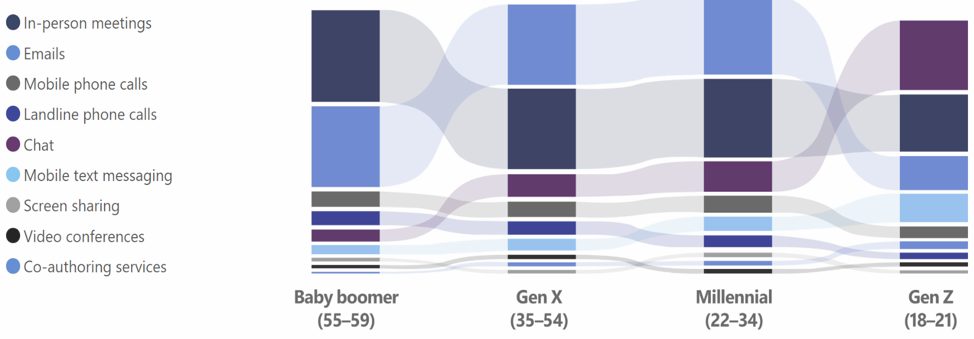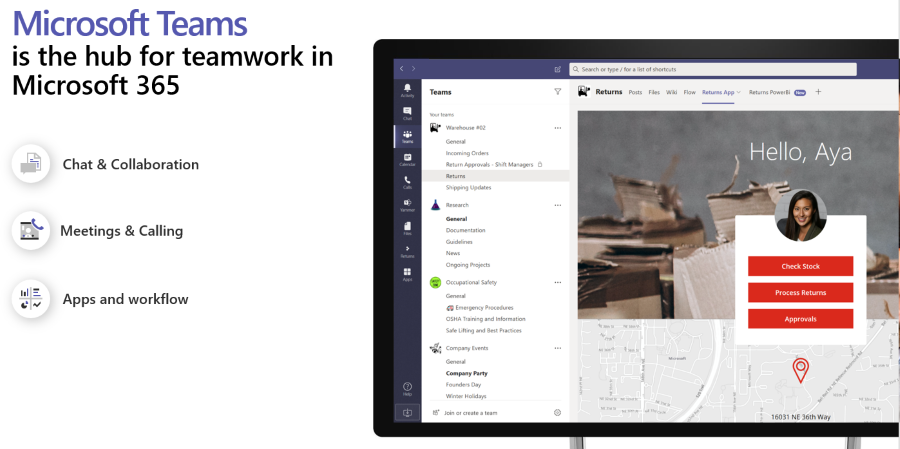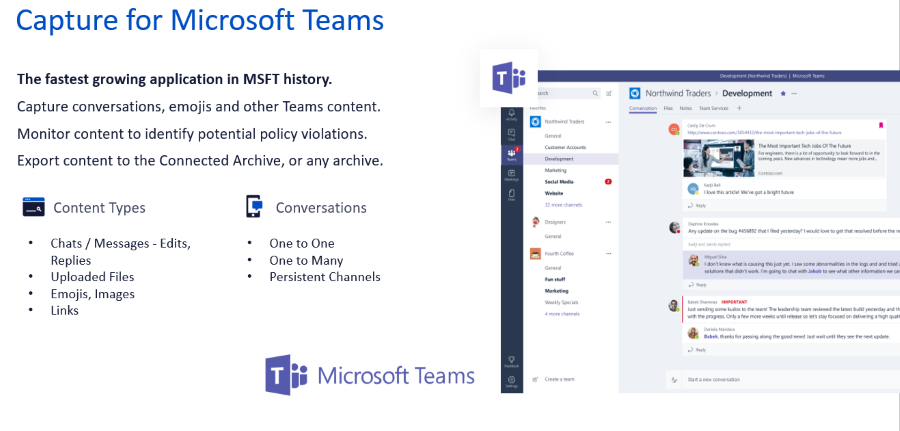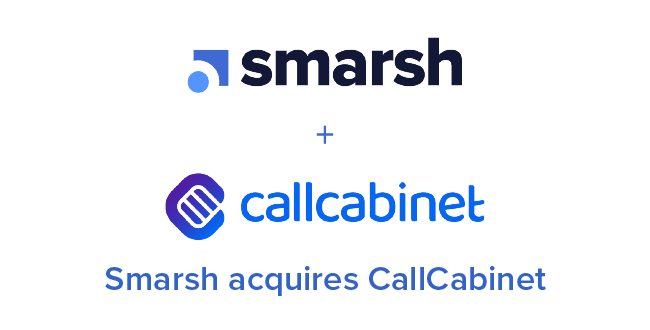Microsoft and Smarsh: Better Together
Every organization is experiencing a fundamental transformation in the way that they get work done. One might conclude that this disruption is due to the coronavirus pandemic, but it’s much deeper than that. The reality is that employee preferences for specific technologies has always been dynamic, and firms have always been in catch-up mode as they attempt to keep up with the next demographic entering the workplace.
For many firms, the result has been the need to support a dizzying array of single-purpose, siloed applications — some of which provide duplicative functionality or “modalities.” This adds complexity for individuals to be connected and productive through a common base of tools, and creates new sources of information risk. It is this challenge that the Smarsh & Microsoft partnership is ideally suited to address, which was the subject of our two recent joint webinars.

How many different ways have you communicated today?
A 2018 survey by Microsoft shows a significant shift in the ways that various generations prefer to communicate today. Generation Z, as the first generation of true digital natives, has an obvious preference for instant message or chat. They were raised in a world where the internet, social media and smartphones are standard tools of communication. Meanwhile, email remains the preferred business communication tool by millennials and Generation X employees, necessitating the support of multiple communication technologies.
As Covid-19 has effectively knocked in-person meetings off the chart, collaboration tools, video chats and phone calls have picked up the slack. The impressive statistics of Microsoft Teams adoption bear this out:
- 75+ million daily active users (DAUs)
- 200+ million meeting participants in a single day
- 4.1+ billion Teams meeting minutes generated
Process improvement and continuity with Microsoft Teams
Meetings, calls and conferences are up 500%. Video usage has skyrocketed. Many financial organizations would traditionally have turned off video and audio functionality, but they have been forced to rethink that strategy because of current circumstances. Recently, Microsoft CEO Satya Nadella said that we have seen two years of digital transformation in two months. We couldn’t agree more.
Microsoft Teams is addressing the challenge of siloed, single-function tools. It is more than just an instant messaging or video chat application; it provides an ecosystem that helps organizations be truly collaborative and produce results that demonstrate productivity advances. As the hub for teamwork, Teams is focused on putting all information and entire workflows into a global cloud service that supports distributed workgroups around the world.
As a process example, Teams can be leveraged across an entire sales cycle, where groups can collaborate in creating the sales quote, building the pitch deck, all the way through to hosting the meeting to close the deal. Chat, video, app sharing, calling and full mobile accessibility are all integrated components in the Teams experience.

Collaboration tools and compliance in regulated industries
Of course, In regulated industries, these gains come with the questions of how to remain compliant with regulatory requirements defined by FINRA, SEC, FCA and other bodies. Video, voice recordings, whiteboard and app sharing are all fundamentally different than email. Each modality raises new recordkeeping and supervisory questions where regulators have provided some “guidance,” but few concrete rules about how firms should be managing them.
What remains clear is that firms must manage risk across all communications platforms. Regulators around the world have said that the current pandemic will not absolve firms of their responsibilities to comply with regulations like MiFID II, FINRA 3110 and SEC 17a-4.
Compliance teams have mostly moved past the emergency tactical response we have seen over the last few months, toward a strategic approach. The fact that more than half of the respondents on both webinars indicated that they are either currently evaluating or implementing Microsoft Teams attests to this shift.

Smarsh and Microsoft Partnership
This dynamic illustrates the importance of the collaboration between Smarsh and Microsoft, in a relationship that now spans over 20 years. From OCS and MCS, Lync, Skype for Business and now into Microsoft Teams, we’ve helped organizations successfully leverage technology innovation while managing potential communications risk.
Smarsh is an integral component in addressing the complex compliance issues that arise from using the full capabilities of Microsoft Teams. Capturing and recording all communications, including chat, media, and files, in their full native conversational context, is only the first step. We then ensure communications data is stored in a compliant, performant and scalable solution. This is essential when considering the increase in the volume of data that is flowing through these tools. Performing e-discovery, supervision or other types of analytics requires a backbone for this information that can keep up with these demanding processes.
Our continued expansion into the Microsoft One Commercial Partner program allows us to collaborate on delivering value directly with our customers. Smarsh and Microsoft are working together to help clients leverage our combination of technology solutions, including the Microsoft Office 365 suite, Smarsh Enterprise Archive and Supervision application.
We hosted Marc Sanders, Principal Program Manager at Microsoft for discussions on Microsoft Teams, collaboration and regulatory challenges in EMEA and for organizations based in the U.S.
Share this post!
Smarsh Blog
Our internal subject matter experts and our network of external industry experts are featured with insights into the technology and industry trends that affect your electronic communications compliance initiatives. Sign up to benefit from their deep understanding, tips and best practices regarding how your company can manage compliance risk while unlocking the business value of your communications data.

Subscribe to the Smarsh Blog Digest
Subscribe to receive a monthly digest of articles exploring regulatory updates, news, trends and best practices in electronic communications capture and archiving.
Smarsh handles information you submit to Smarsh in accordance with its Privacy Policy. By clicking "submit", you consent to Smarsh processing your information and storing it in accordance with the Privacy Policy and agree to receive communications from Smarsh and its third-party partners regarding products and services that may be of interest to you. You may withdraw your consent at any time by emailing privacy@smarsh.com.
FOLLOW US